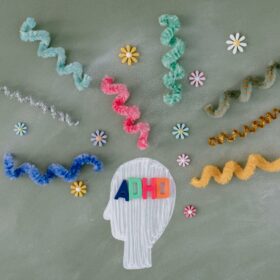
PMDD treatment options
In this article
What's the lowdown?
PMDD treatments can include lifestyle changes, medications, therapy or surgery
The treatments can be used alone or in combination with each other to manage the symptoms
Surgery is the last option as it comes with risks and cannot be undone
What is PMDD?
PMDD or pre-menstrual dysmorphic disorder is a cyclical condition that affects women around the luteal phase of their menstrual cycle (which is the 2 weeks before your period). While it is technically a diagnosis based on the American Psychiatric Association, it has been adopted in the UK but can also be called severe premenstrual syndrome (PMS)1.
PMDD symptoms present as1:
- Tender boobs
- Muscle aches
- Bloating
- Headaches
- Feeling extremely exhausted
- Lack of interest in normal activities
- Difficulty concentrating
- Changes to appetite and cravings (binge eating can be common)
- Trouble sleeping (Insomnia) or sleeping too much (hypersomnia)
- Loss of control
- Anger
- Irritability
- Symptoms affecting your day-to-day functioning such as work or personal relationships
- Severe low mood (depression, hopelessness, helplessness)
- Thoughts of ending your life or self-harm
- Big emotional mood swings (quickly changing from happy to sad)
- Anxiousness
PMDD treatment
The treatments of PMDD can encompass multiple options such as2:
- Lifestyle & diet changes
- Therapy
- Medications: Antidepressants, Injections, Contraceptives, Hormone replacement therapy (HRT), Painkillers
- Surgery: Hysterectomy, Oophorectomy
Lifestyle and diet changes
Making positive changes to your life and diet can not only dampen PMDD symptoms but also generally boost your health and well-being. General tips include moderate exercise multiple times a week (a good rule of thumb is 150 minutes of activity a week), well-balanced meals (such as lean protein, unsaturated fats, and less sugar), reducing smoking, alcohol and caffeine and getting adequate good quality sleep3.
Incorporating these changes into your life might be sufficient enough to reduce your symptoms to a manageable level or they could be used as well as medical or surgical treatments.
Therapy
Cognitive behavioural therapy (CBT) is a psychological therapy that is offered as a treatment for PMDD to manage emotional symptoms such as labile mood, anxiety, suicidal thoughts and the rest. CBT aims to equip you with techniques to manage these emotional symptoms4.
In our PMDD therapy article, we dive deep into the ins and outs of CBT.
PMDD Medication
HRT for PMDD
Hormone replacement therapy (HRT) is not only used to manage menopausal symptoms but also PMDD symptoms. Using transdermal (via the skin) high-dose oestrogen HRT can stop your menstrual cycle, improving PMDD symptoms alongside it. It is important to note, that if you still have a uterus, you need to take progesterone alongside the oestrogen as it is needed to prevent the womb lining from growing out of control. Brands such as Utrogestan, which is a form of natural progesterone, are usually recommended as they are less likely to exacerbate PMDD symptoms2.
Antidepressants for PMDD
If you prefer a hormonal-free treatment, some anti-depressants have been recommended for the treatment of PMDD. Two anti-depressant categories called selective serotonin reuptake inhibitors (SSRIs) and serotonin-noradrenaline reuptake inhibitors (SNRIs) can be prescribed. These can be taken only in the 2 weeks of the luteal phase before your period or every day throughout the month.
SSRIs are a first-line choice for severe PMS or PMDD. In a study, SSRIs are shown to be 60-70% effective in treating people with PMDD5.
Injections (GnRH for PMDD)
Injectable medications called Gonadotrophin-releasing hormone analogues (GnRHa) are used for ovarian suppression (to switch off your ovaries). This medication stops ovulation each month, which prevents your monthly cycle. No cycle = No PMDD symptoms. It is essentially inducing a chemical menopause and you might experience symptoms similar to menopause.
As these are very strong medications, they are only prescribed by a specialist. “Add back” HRT will be prescribed if a GnRHa is used for more than 6 months. You will also need bone scans to make sure they are not getting weakened by the treatment2.
Contraception for PMDD
The combined oral hormonal contraceptive pill (COCP) is a common treatment option for PMDD as it stabilises symptoms by delivering a steady dose of hormones, and stopping your menstrual cycle. As PMDD is a result of the body’s sensitivity to our fluctuating hormones, reducing these fluctuations can lessen the severity of symptoms2.
The best contraceptive pill for PMDD is a COCP which contains drospirenone, a specific type of progestogen. Yasmin, Eloine, and Lucette are COCPs with drospirenone that are recommended for PMDD treatment. Drovelis also contains drospirenone but is a new COCP so hasn’t been researched in PMDD yet. It is advised to take the pill continuously or take 3 packets in a row before taking a 4-7 day break.
In the UK there are so many COCP brands, making it difficult to know how to choose the right one. The Lowdown has built a platform empowering our community from sharing their personal experiences so you can understand how others react to them. Our contraception comparison tool was also created to facilitate this decision by comparing brands directly.
If you want to share your experience on how contraception has alleviated or worsened your PMDD symptoms, please share your experience with us and countless other people who can benefit from it.
Painkillers for PMDD
PMDD also presents with physical symptoms such as joint/muscle aches or headaches. Medications such as non-steroidal anti-inflammatory medications (e.g. ibuprofen or naproxen) can treat these6. While you can easily get these medications over the counter at a pharmacy, we suggest discussing them with your medication professional if you are taking other medications for your PMDD.
Surgery for PMDD
Surgery is reserved for severe cases of PMDD or when other treatments have failed. Removing reproductive organs is a life-changing decision that cannot be reversed. It should be a thought-through decision as it not only comes with surgical risks but also life-long impacts7.
Hysterectomy for PMDD
Hysterectomy is the removal of your womb. It is usually offered with a bilateral salpingo-oophorectomy which is the removal of your fallopian tubes and ovaries. This operative procedure aims to put the body in a menopausal state. Our monthly cycle is driven by our ovaries, so removing the ovaries stops your periods and hopefully, the PMDD symptoms associated with them.
Oophorectomy for PMDD
Some people are offered bilateral oophorectomy (removal of both ovaries) alone. But leaving the womb in would mean taking HRT with progesterone, which could reintroduce PMS-like symptoms. If your ovaries have been removed, you should be offered oestrogen only HRT until the age of 51 which is the average age of menopause in the UK.
Summary
Getting a PMDD diagnosis is essential if you want to unlock PMDD treatments to improve your quality of life. 5% of women have reported symptoms severe enough to fit the diagnosis of PMDD8.
The treatments we have covered have evidence to back up their efficacy in managing PMDD, however, there is no way of knowing how it will impact you until you try it. It might take multiple attempts to find the right treatment for you.
PMDD is a debilitating condition which deserves more research and support. Reach out to your GP or a Lowdown Doctor to start the conversation so we can get you the help you need.
Our medical review process
This article has been medically reviewed for factual and up to date information by a Lowdown doctor.






